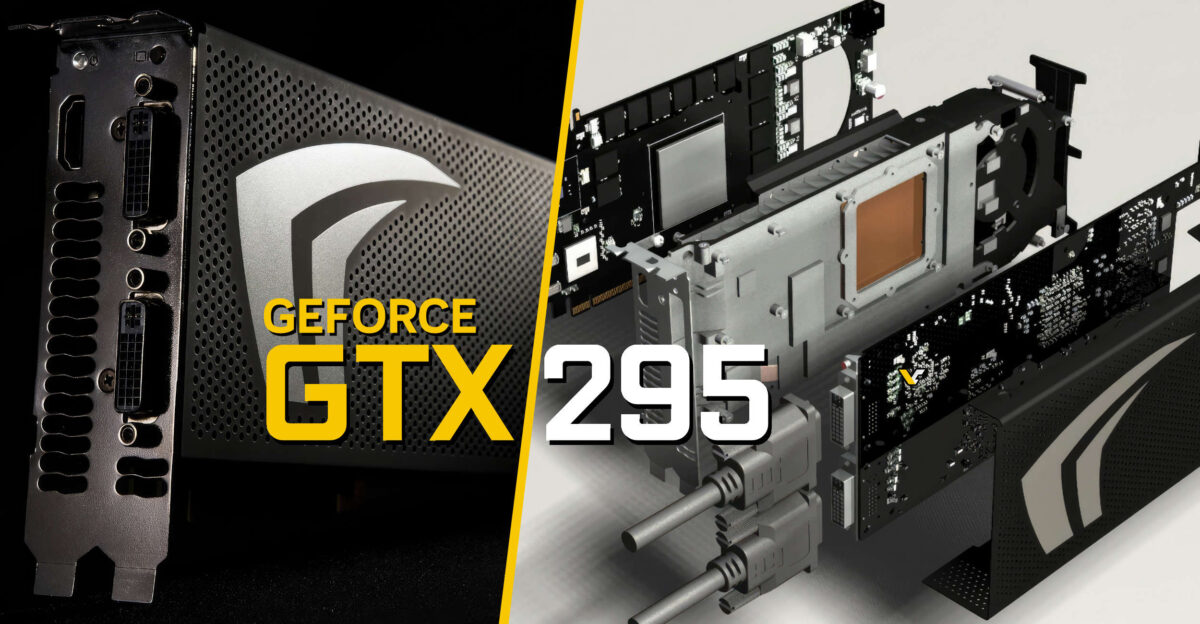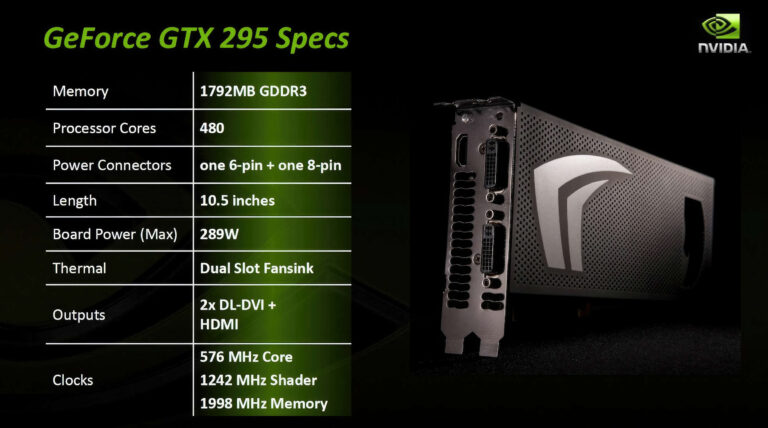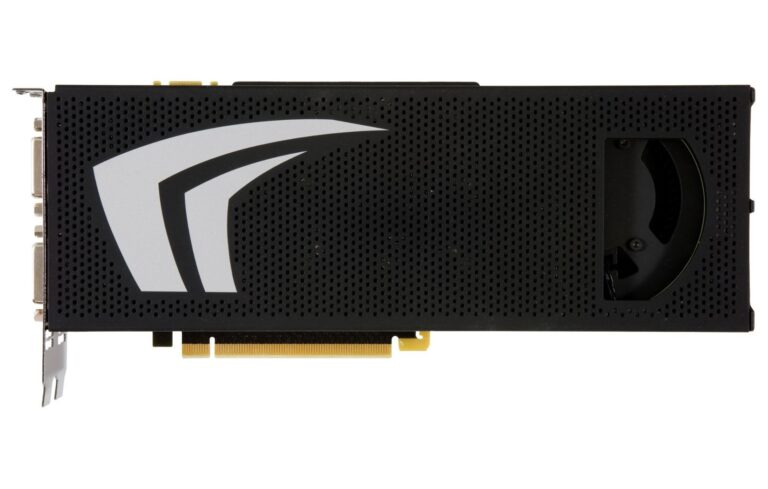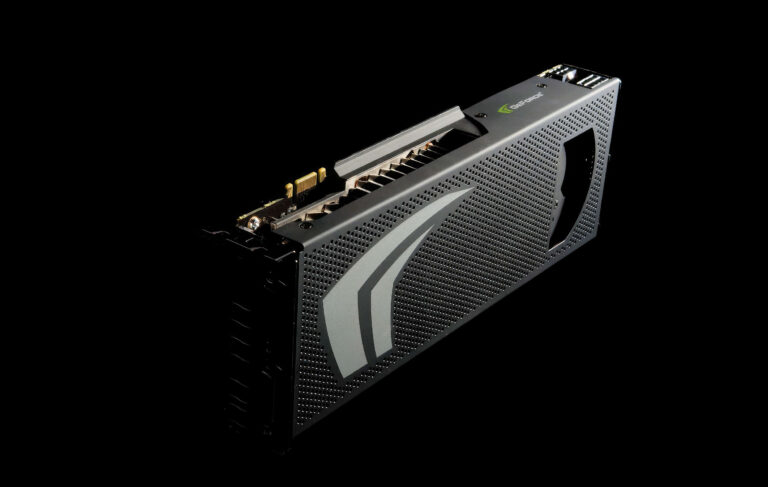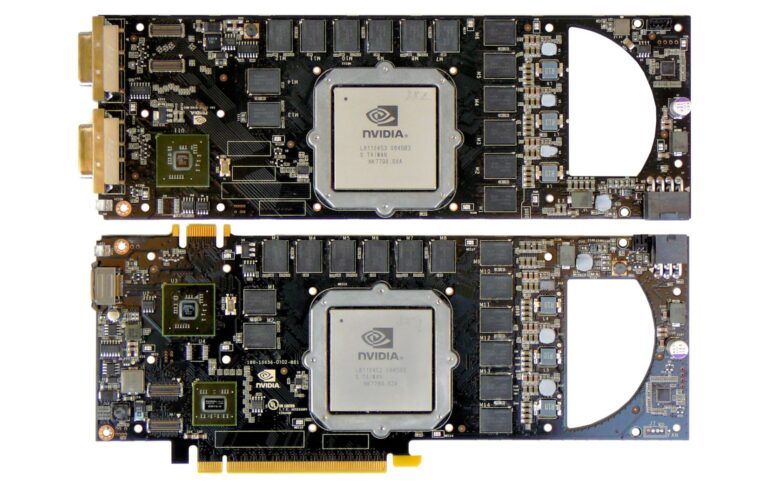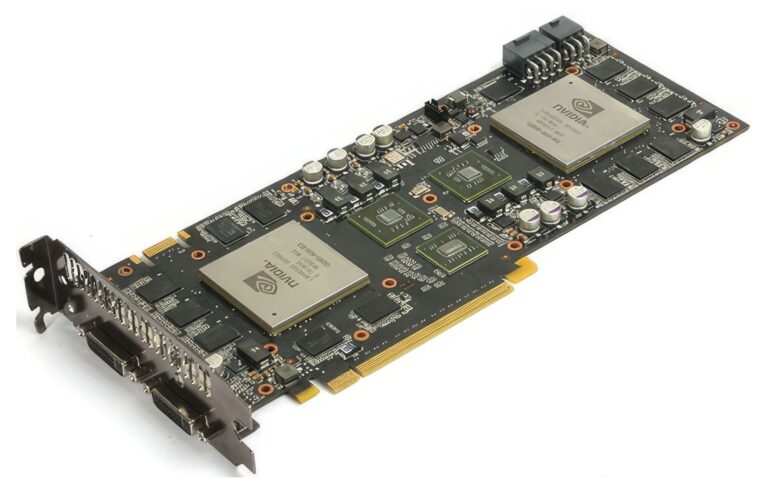GeForce RTX 295: Enabling SLI with one card
It was (almost) exactly 15 years ago that NVIDIA introduced its GTX 295 graphics card. It was built upon a crazy concept of sandwiching two PCBs with two GPUs.
When the card was announced in 2009, it was relatively well priced in today’s standards, at $499, but at that time it sounded like a crazy amount of money for a GPU.
The GTX 295 came with improved 55 nm GT200 GPUs, each packed with 240 unified processors, providing a total of 480 cores—twice the capacity of the GeForce GTX 280. However, it wasn’t a mere copy of the GTX 280; instead, it presented specifications that fell between the GTX 260 and GTX 280. Notably, it featured a lower GPU clock at 576 MHz and a slightly reduced memory bus, now at 448-bit compared to the GTX 280’s 512-bit. As a result, the card supported 1792 MB of GDDR3 memory, a slight increase from the GTX 280’s 1 GB.
The card required 289W of power, which was supplied through one 8-pin and one 6-pin power connectors. Although it featured two GPUs, each on a separate PCB, the card only had one fan and it was still only dual-slot design. The card used full PCIe Gen2x16 interface and was equipped with two DUAL-DVI and one HDMI ports.
GeForce GTX 295 Specs, Source: NVIDIA
GeForce GTX 295 official images, Source: NVIDIA
The GTX 295 utilized SLI technology, employing the Alternate Frame Rendering (AFR) technique. This method involved rendering frames interchangeably between the two GPUs. However, it came with noticeable drawbacks, such as micro-stuttering, even in situations with high framerates. Another challenge stemmed from both GPUs needing access to identical data, leading to the utilization of their memory for the same assets. In practical terms, this limitation effectively capped the true capacity at 896 MB for the specifications of one printed circuit board (PCB). By using two of GTX 295 cards, gamers could give Quad-SLI a try.
GeForce GTX 295 two PCBs, Source: NVIDIA/Guru3D
NVIDIA has later released a revised version featuring just one PCB design. It featured the same specs, but the cooler design with one fan in the center, was later adopted by future dual-GPU series, such as GTX 590 or even TITAN Z.
In case you’re wondering how did this card perform, ComputerBase recently shared a review focusing on this model. It is a chance to go back 15 years ago, when the competition between AMD and NVIDIA really was heating up. AMD had a very successful Radeon HD 4000 series at the time, also featuring a 55 nm node. The company had even similar card featuring two GPUs: the HD 4870X2.
| NVIDIA GTX 295 Specs | |||
|---|---|---|---|
| VideoCardz | NVIDIA GeForce GTX 295 | Radeon HD 4870 X2 | NVIDIA GeForce GTX 280 |
| Launch Date | January 2009 | August 2008 | June 2008 |
| GPU(s) | GT200 x 2 | R700 (RV770 x 2) | GT200 |
| Transistor Count | 2800 million | 1912 million | 1400 million |
| Node | 55nm | 55nm | 65 nm |
| GPU Clock | 576MHz | 750MHz | 602MHz |
| Unified Processors | 480 | 1600 | 240 |
| Stream Processor Clock | 1242 MHz | 750 MHz | 1296 MHz |
| TMUs | 160 | 80 | 80 |
| ROPs | 56 | 32 | 32 |
| Memory | 1792 MB GDDR3 | 2GB GDDR5 | 1GB GDDR3 |
| Memory Clock | 1998 MHz | 3600 MHz | 2214MHz GDDR3 |
| Bus Width | 448-bit | 256-bit | 512-bit |
| Bandwidth | 224 GB/s | 230 GB/s | 142 GB/s |
| PCI Express | PCIe 2.0 x16 | PCIe 2.0 x16 | PCIe 2.0 x16 |
| Power Connectors | 6-pin, 8-pin (295W) | 6-pin, 8-pin (286W) | 6-pin, 8-pin (236W) |
| Multi GPU Technology | Yes (SLI) | Yes (CrossFireX) | Yes (SLI) |
| Display Connectors | 2 x DVI-DL, 1 x HDMI | 2 x DVI-DL | 2 x DVI-DL |
| MSRP | $499 | $549 | $429 |
